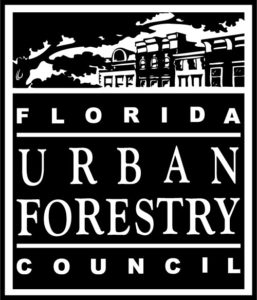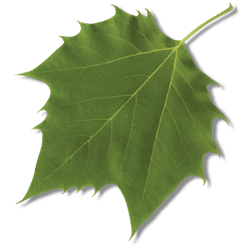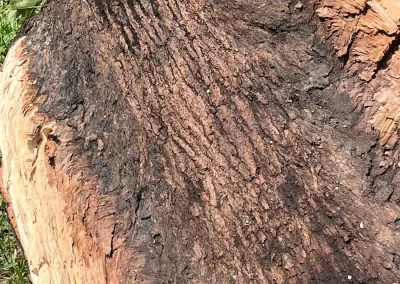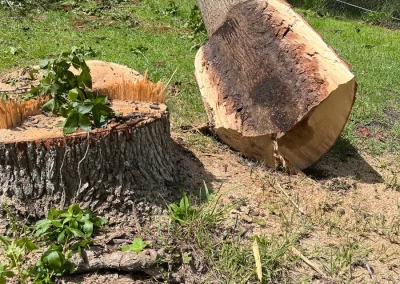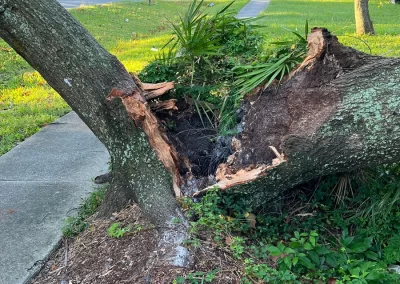QUESTION: What are codominant stems and what do I look for?
ANSWER: In this issue, Stump The Forester answers a co-dominant question about codominant stems.
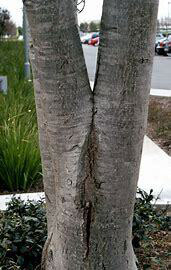 Codominant stems are “twin stems,” or multi stems that form within a tree’s branching. They are forked stems nearly the same size in diameter, arising from a common junction and lacking a normal branch and trunk union. They are perhaps the most common structural defects that can compromise the integrity of a tree. They are considered structural defects because they form a weak point in a tree’s anatomy creating a high potential for failure or breakage. Codominant stems are rather conspicuous if you know what to look for. Look for two or more vertical stems that originate from a common point, or joint. There is no one clear central leader as two or more vertical stems are competing for dominance. Adjacent stems will be similar in diameter since they formed at the same approximate time during the tree’s growth. Codominant stems do not form a trunk & branch attachment with interlocking fiber. Codominant stems form an adjacent trunk upon trunk arrangement with included bark often embedded between the stems. They will form a sharp V-shaped union as opposed to the wide U-shape common with strong branch & trunk attachments. Put simply, look for forked stems nearly the same size in diameter, rising from a common junction, and lacking a normal branch attachment to a parent stem or trunk.
Codominant stems are “twin stems,” or multi stems that form within a tree’s branching. They are forked stems nearly the same size in diameter, arising from a common junction and lacking a normal branch and trunk union. They are perhaps the most common structural defects that can compromise the integrity of a tree. They are considered structural defects because they form a weak point in a tree’s anatomy creating a high potential for failure or breakage. Codominant stems are rather conspicuous if you know what to look for. Look for two or more vertical stems that originate from a common point, or joint. There is no one clear central leader as two or more vertical stems are competing for dominance. Adjacent stems will be similar in diameter since they formed at the same approximate time during the tree’s growth. Codominant stems do not form a trunk & branch attachment with interlocking fiber. Codominant stems form an adjacent trunk upon trunk arrangement with included bark often embedded between the stems. They will form a sharp V-shaped union as opposed to the wide U-shape common with strong branch & trunk attachments. Put simply, look for forked stems nearly the same size in diameter, rising from a common junction, and lacking a normal branch attachment to a parent stem or trunk.
The codominant stem is just one example of a wide variety of structural defects that can emerge if growth is allowed to expand unchecked. Trees are designed to grow and get big. They are engineered to take up space. Trees compete for space among neighboring trees, adjacent structures, land use, and between branches and stems within their own canopy. There are tricks of the trade a tree can use in the race for space. Some branch tactics are shadier than others. The codominant stem is a trick and not a tried-and-true method for achieving long-term stability and longevity during branch formation.
Good form and strong branch structure are best when a tree forms a single, leading trunk, or dominant stem. Strong U-shaped unions with interlocking wood fiber develop between trunks and subordinate branching within the tree. Internal chemical and physical properties are formed at branch unions that protect and strengthen a tree. This will decrease a tree’s vulnerability to outside forces, stressors, and the spread of internal decay.
Opposing stems will compete for dominance. Each will play the role of a primary trunk, or leading stem of the tree. They can form at the base of a tree, or at various heights along a trunk. Each vertical stem will have a terminal bud and an independent branching structure. Internal branch protection zones – favorable chemical and physical properties associated with proper branch unions – are absent. The strong internal interlocking wood fiber needed for mechanical support, reinforcement, or strong attachments will not form between co-dominant stems. The opposing stems will continue to develop their own protective bark that will build a wall between the stems. Internally, the soft bark tissue acts like a separator between the stems as opposed to the overlapping wood fiber that threads together with normal branch attachments. Internal bark formation becomes hidden as the tree matures and puts on girth. This condition is known as included bark – bark that becomes embedded within co-dominant stems and causes a weak structural union between tree parts. Bark inclusion (inside bark tissue) increases the risk of internal decay. When co-dominant stems split, the inner portion of the stems are exposed. Upon close inspection, the included bark is easily seen.
The weak branch arrangements are more susceptible to acute stress as high winds, storms, snow, ice, wet leaves, impacts, or the chronic force of gravity over time. Co-dominant stems will fail or break at the point of attachment. If there is a house, parked car, roadway, utility, or other targets within the fall zone, the structural defect can create a significant risk. Failure is not always immediate during a storm event. The acute stress during storm can start a slow separation process. Chronic stress with damaged stems can begin pulling stems apart slowly over time. Eventually the limbs fail and separate completely. The pull of gravity can stress mature stems that have developed significant size and weight. Large branch failures create large tree wounds that can further expose the tree to pathogens, decay, and external stressors. Mature trees exhibiting codominant stem characteristics should be inspected for cracks, splits, splintered wood fiber, or signs of internal decay at the point of attachment.
The best treatment for correcting codominant stems in young trees is pruning. Proper pruning can train the growth of young shoots and can greatly reduce the need for drastic structural pruning for the tree when mature. Selecting and removing a codominant stem early in a tree’s growth will allow the pruning cut to seal and will enable the tree to resume a desirable, proper single, dominant leader. Reducing a codominant stem is an alternative to complete removal. It will allow a portion of the stem to remain, but with a subordinate role like a branch rather than a leading stem. The aspect ratio between the size of co-dominant stems will decrease as growth will be pushed to the single, dominant, leading stem. Stronger branch unions will develop as the aspect ratio between the stems is reduced.
 The removal, or reduction of a codominant stem in the later stages of a mature tree can present risks. Advance treatment may require expert recommendations when prescribing how to proceed to avoid branch failure, tear out, exposure, or unintentional harm. Cabling and bracing may provide an alternative treatment when reinforcing susceptible, large, mature codominant stems. In some cases, selective pruning to reduce the weight, or to decrease the gravitational pull upon extended branches may provide a temporary solution for codominant stems that cannot easily be pruned.
The removal, or reduction of a codominant stem in the later stages of a mature tree can present risks. Advance treatment may require expert recommendations when prescribing how to proceed to avoid branch failure, tear out, exposure, or unintentional harm. Cabling and bracing may provide an alternative treatment when reinforcing susceptible, large, mature codominant stems. In some cases, selective pruning to reduce the weight, or to decrease the gravitational pull upon extended branches may provide a temporary solution for codominant stems that cannot easily be pruned.
Codominant stems and delinquent branch structures are not a new phenomenon to experienced tree-care professionals. The tree-care industry has the talent and resources needed to identify, assess, prescribe, and provide treatment options. They include, certified arborists, with municipal, utility, academic entities; private tree-care professionals; consulting firms; landscape architects; nursery growers; and tree advocacy groups. Schedule a site visit today. Don’t delay.
Answer provided by Joe Anderson – Veg. Mgt Spp, ISA Arborist, FUFC & FL-ISA Board Member
